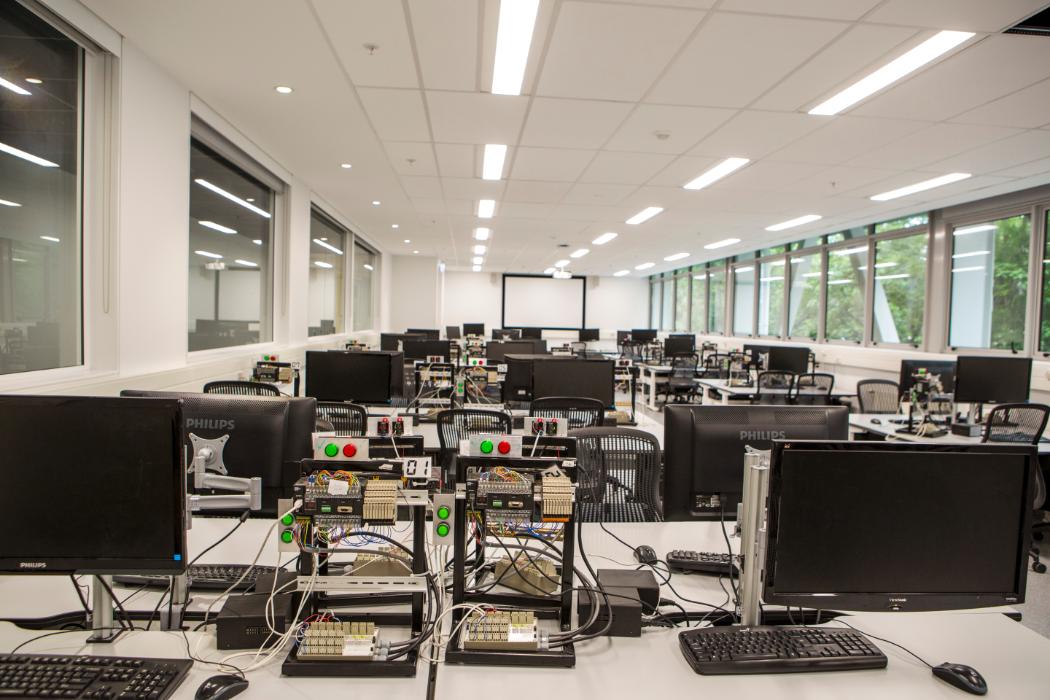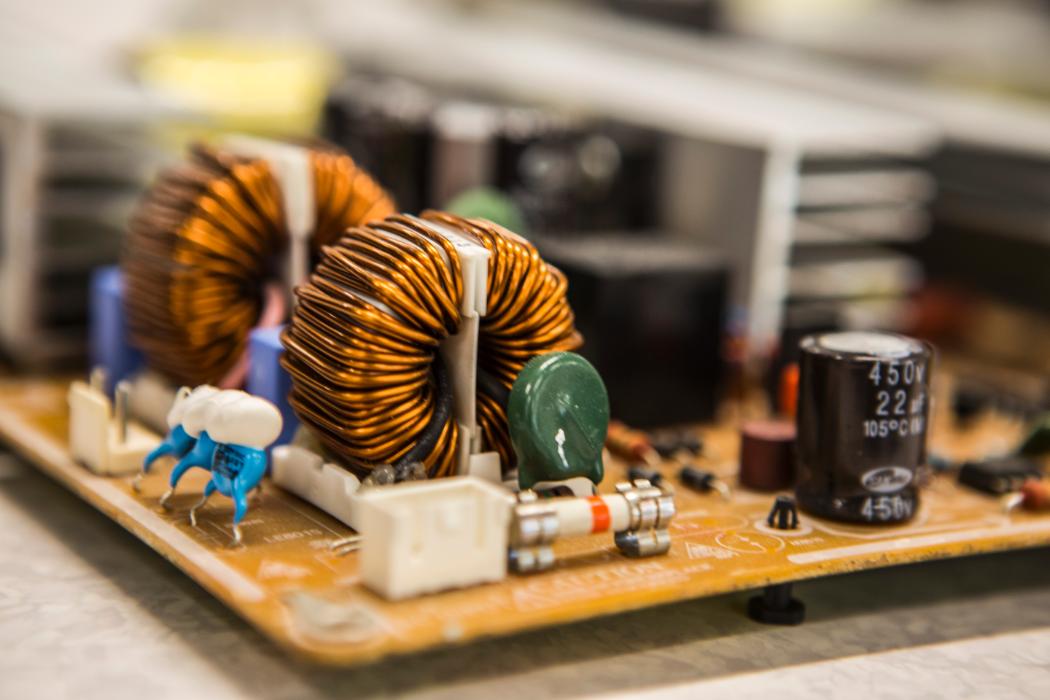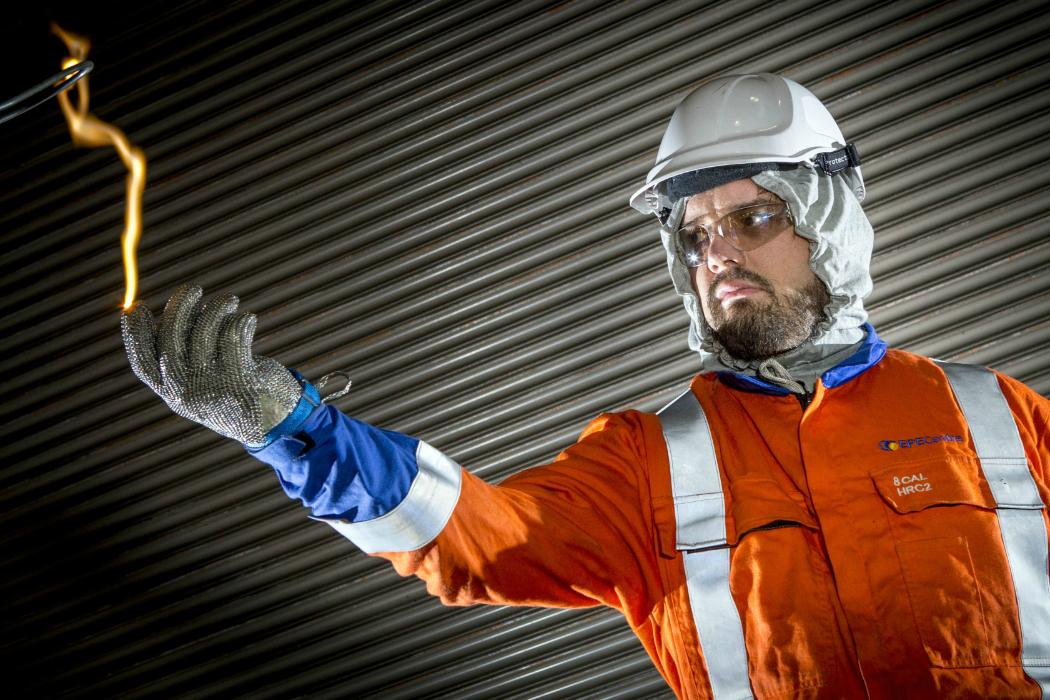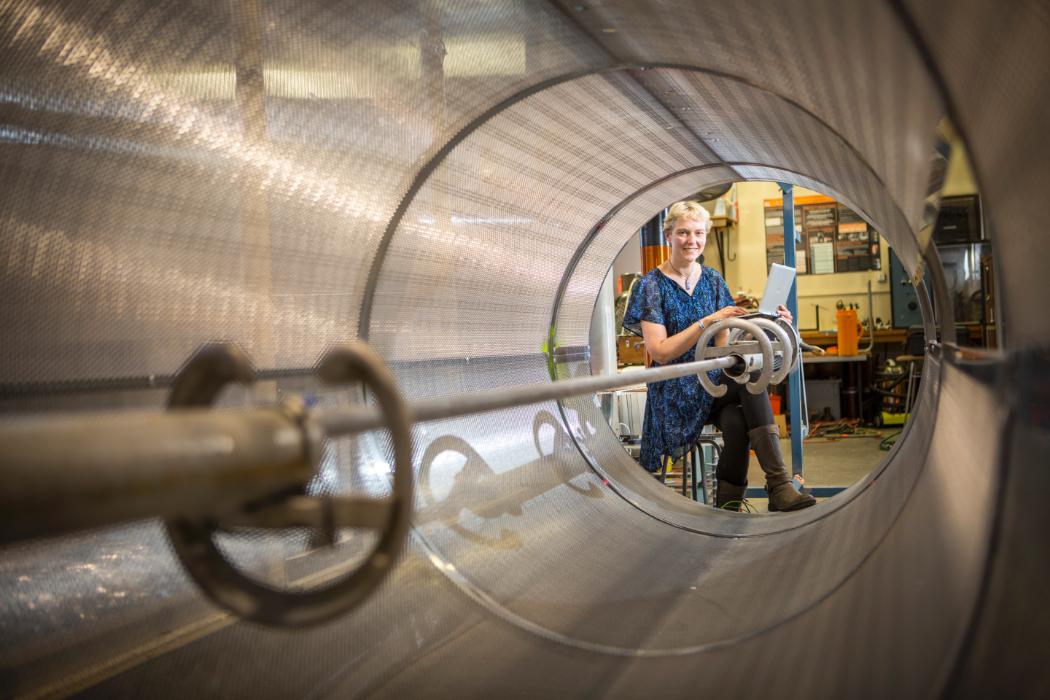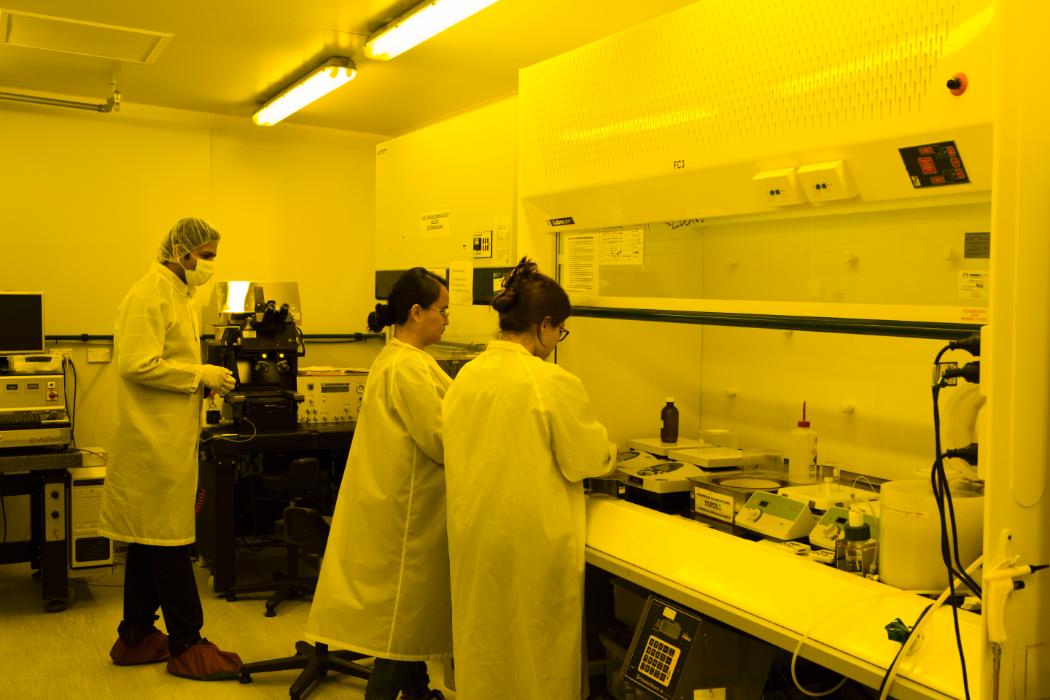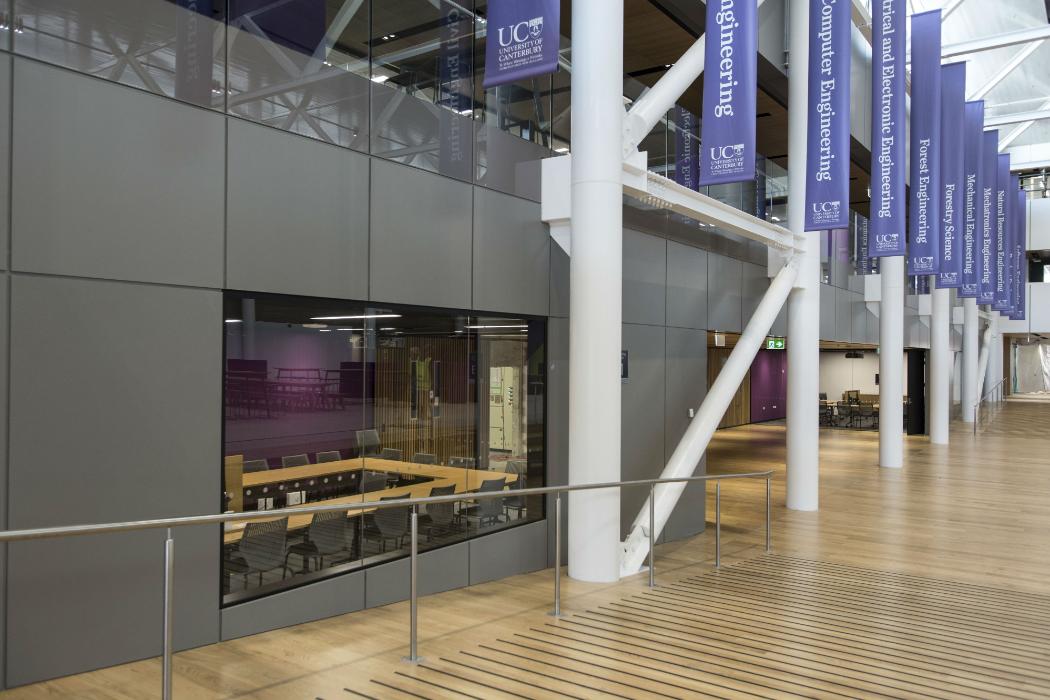Overall philosophy
When an emergency trip button is pressed, all the power is turned off to the wall sockets in that area except for the lights. Beware of stored energy eg capacitors, uninterruptable power supplies or batteries will still carry charge.
All the trip buttons are of the latching type therefore remain in the activated state (ie tripped) until they are unlatched.
To restore power, two intentional actions are required.
- First the activated trip button must be unlatched.
- Secondly a reset button must be pressed to energise the contactor suppling power to that area. Pressing the reset button before the trip button is unlatched will not restore power to the affected area.
Power should only be restored by experienced (authorised) personnel. These are the Technician or Academic Staff Member assigned to the area that has been isolated.
Laboratories requiring an Electrical trip system:
Not all Laboratories in the Department require an emergency electrical trip system. Laboratories that do have an emergency electrical trip system have electrical interconnections with the Electrical Machines Laboratory and deal with voltages above the Extra Low Voltage level as defined in the Electrical Regulations 1997, ie above 32volts AC or 115volts DC.
The Laboratories with an emergency electrical trip system are:
- Electrical Machines ( room A113 )
- High Voltage
- Power Applications and Utility ( room A115 )
- Power Electronics ( room A109 )
The central role of the Electrical Machines Laboratory:
The Electrical Machines Laboratory is central to the emergency electrical trip system. This is because the patch panel that allows electrical interconnection between laboratories is located in the Power Distribution Room ( A113c) at the east end of the Electrical Machines Laboratory. On this panel is also a series of RED lights identifying which laboratory has had an emergency trip activated.
The Patch Panel
The patch panel allows several different power sources to be connected to the different student benches in the Machines Laboratory as well as different laboratories.
Generally the power source is supplied from the Machines Laboratory to the other Laboratories. However it is possible to have power supplied from other laboratories.
The wiring, particularly the control wiring, behind this panel has voltage supplied from several different laboratories. It should never be assumed all power is turned off to this panel.
Voltage supplies in each laboratory
The power for 230v sockets and three phase sockets are generally supplied from the local distribution board. But power may also be supplied from another laboratory or supplied to another laboratory via the patch panel in the Machines Laboratory. In all cases, power outlets and supplies will be de-energised and isolated in the area an emergency trip button is pressed.
The High Voltage Laboratory also has a third supply into the laboratory. This is for the High Voltage Transformer and the Motor Speed Controller and/or the three phase Experimental Distribution Board. This is controlled by the use of three "Dorman and Smith" fuse switches located below the local standard distribution board.
Areas affected in an emergency trip situation
Activating an emergency trip in any laboratory will isolate power in that laboratory but may also affect other laboratories depending on the electrical interconnections in place at that time.
Machines Laboratory
When an emergency trip is activated in the Machines Laboratory the trip contactor in the local distribution board (in machines lab next to eastern hall doors) is de-energised and the main circuit breaker on the Patch Panel is opened. The circuit breaker on the patch panel supplies the power to all the different voltage supplies available on the patch panel such as the DC supply, the two MG sets etc. Therefore any other lab connected and using voltage supplied from the patch panel will have that voltage disrupted ie turned off.
Before the main circuit breaker of the patch panel is turned on a check must be made with any laboratories connected that it is safe to turn ON the various voltage sources.
Other laboratories
When an emergency trip is activated in any of the other labs three sets of isolating contactors drop out (are de-energised).
- The local distribution board isolating contactor which supplies any 230v sockets and three phase supplies.
- The isolating contactors behind the patch panel, which connect the cable from the lab to the patch panel. These contactors are rated to break AC supply.
- The DC control contactor behind the patch panel, which trips out the DC supply and the two motor generator sets when de-energised. The DC supply contactor is used to break any DC voltage supplied to the laboratories because the isolating contactors in 2 above are not rated to break a DC voltage supply.
Only laboratories connected to the DC supply or the motor generator sets will be affected when a trip button is activated in any of the other laboratories.
Emergency trip in the High Voltage Laboratory
When an emergency trip is activated in the High Voltage Laboratory the same three groups of isolating contactors are de-energised as described in "Other Laboratories" above. In addition there are isolating contactors below the two Dorman and Smith use switches which isolate the supply to the main High Voltage Transformer and to the Motor Speed Controller and/or three phase Experimental Distribution Board.
Also there is an alarm activated in the mechanical workshop.
Summary of affected areas
Machines Laboratory
- Local 230v and 3 phase supply
- Patch panel
- Any laboratories supplied from the patch panel
High Voltage Laboratory
- Local 230v and 3 phase supply
- Contactors connecting cable from laboratory to patch panel
- DC supply and Motor Generator sets in Power Distribution Room (and laboratories connected to these)
- HV transformer supply
- Motor speed controller and/or 3 phase distribution board
- Alarm in mechanical workshop
Other laboratories
- Local 230v and 3 phase supply
- Contactors connecting cable from laboratory to patch panel
- DC supply and Motor Generator sets in Power Distribution Room (and laboratories connected to these).


